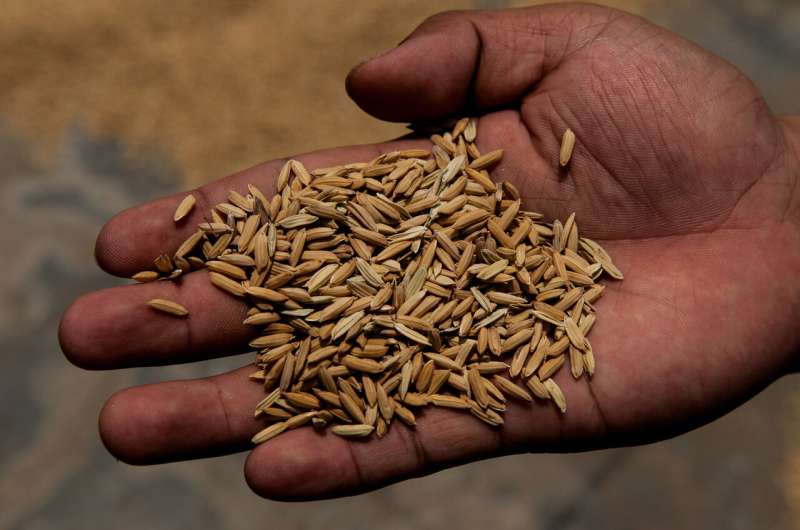More bang for the climate buck: Study identifies hotspots for adaptation funding

Climate change is already making life harder on farmers, especially in developing nations. New sources of funding can alleviate the burden but resources are limited. So where should governments, philanthropists and development agencies prioritize investment?
Using a combination of the latest crop models and local expertise from farmers and others—and applying them to our current trajectory of high greenhouse gas emissions—scientists built a tool to assess climate risk vulnerability to help pinpoint communities most in need of support for adaptation and mitigation.
The study was carried out in Vietnam, Uganda and Nicaragua, developing countries that embody many of the climate shocks in store for the coming decades, including propensity for droughts, floods and high-temperature extremes. The findings were published March 27 in PLOS ONE.
The crop models in this study simulate the climate suitability of specific crops, including rice, maize, beans, coffee and cacao, under current and future climate conditions.
Vulnerability assessments already exist but the Climate Risk Vulnerability Assessment (CRVA) is novel in its focus on integrating a wide range of natural hazards, crops, and factors indicating social vulnerability into a standardized score. The fine resolution of outputs, which allows users to pinpoint hotspots as small as a district in Vietnam, for instance, will be useful for national policymakers and others who must decide which areas of a country to prioritize for support. CRVA is designed to be robust, replicable, and flexible enough to accommodate limitations in data-scarce countries, drawing on national datasets where possible.
"CRVA is a big step forward for decision-makers, especially in countries across the tropics that are hard-hit by climate change," said Peter Läderach, a CCAFS researcher and study co-author at the International Center for Tropical Agriculture (CIAT). "It has major potential to increase the efficiency of climate-related development projects for the most vulnerable smallholder farmers."
What is vulnerability?
The study uses the United Nations Intergovernmental Panel on Climate Change (IPCC) definition of vulnerability. This conceptualizes vulnerability as a combination of exposure, sensitivity and adaptive capacity. Exposure comprises natural hazards, sensitivity is the projected changes in climate and their impact on key agricultural crops, and adaptive capacity is a community's ability to deal with the potential impact.
Using a high-emissions scenario, the study assesses exposure, sensitivity and adaptive capacity to climate change in the three study regions. It projects climate impacts by 2050 on the crops included in the study.
"While climate change impacts on dominant crops will have global and national ramifications, marginalized, poor communities that rely on small-scale agriculture will be the most affected," said Louis Parker, the study's lead author. "CRVA goes a step further in helping to identify where those vulnerable communities are."
Pinpointing climate vulnerability hotspots
The authors applied CRVA in Vietnam, Uganda and Nicaragua, three contrasting developing countries that are particularly threatened by climate change and have significant proportions of their labor forces and economies dedicated to agriculture.
In Vietnam, for example, the methodology was used to map climate change vulnerability and underlying drivers. The results pointed to three critical areas for agriculture as vulnerability hotspots: the Mekong Delta, northwest region and central highlands. By 2050, over 95 percent of the Mekong Delta—the main rice-growing region for Vietnam, the world's fifth largest rice producer—will lose climatic suitability for rice cultivation, and have higher exposure do drought and sea level rise. But already-developed infrastructure and comparatively high levels of education mean the region is marked by a relatively high adaptive capacity.
"Both the approach and information derived from the study can inform decision-makers and NGOs on ensuring strategic interventions that are targeted to best support rural communities most vulnerable to the impacts of climate change," said Parker.
Not only does this kind of mapping and prioritization ensure that resources are being funneled to where they are needed most, but it is also an important step towards attracting the bi- and multi-lateral support that developing countries urgently need for climate change adaptation.
More information: PLOS ONE (2019). DOI: 10.1371/journal.pone.0213641
Journal information: PLoS ONE
Provided by International Center for Tropical Agriculture (CIAT)





















